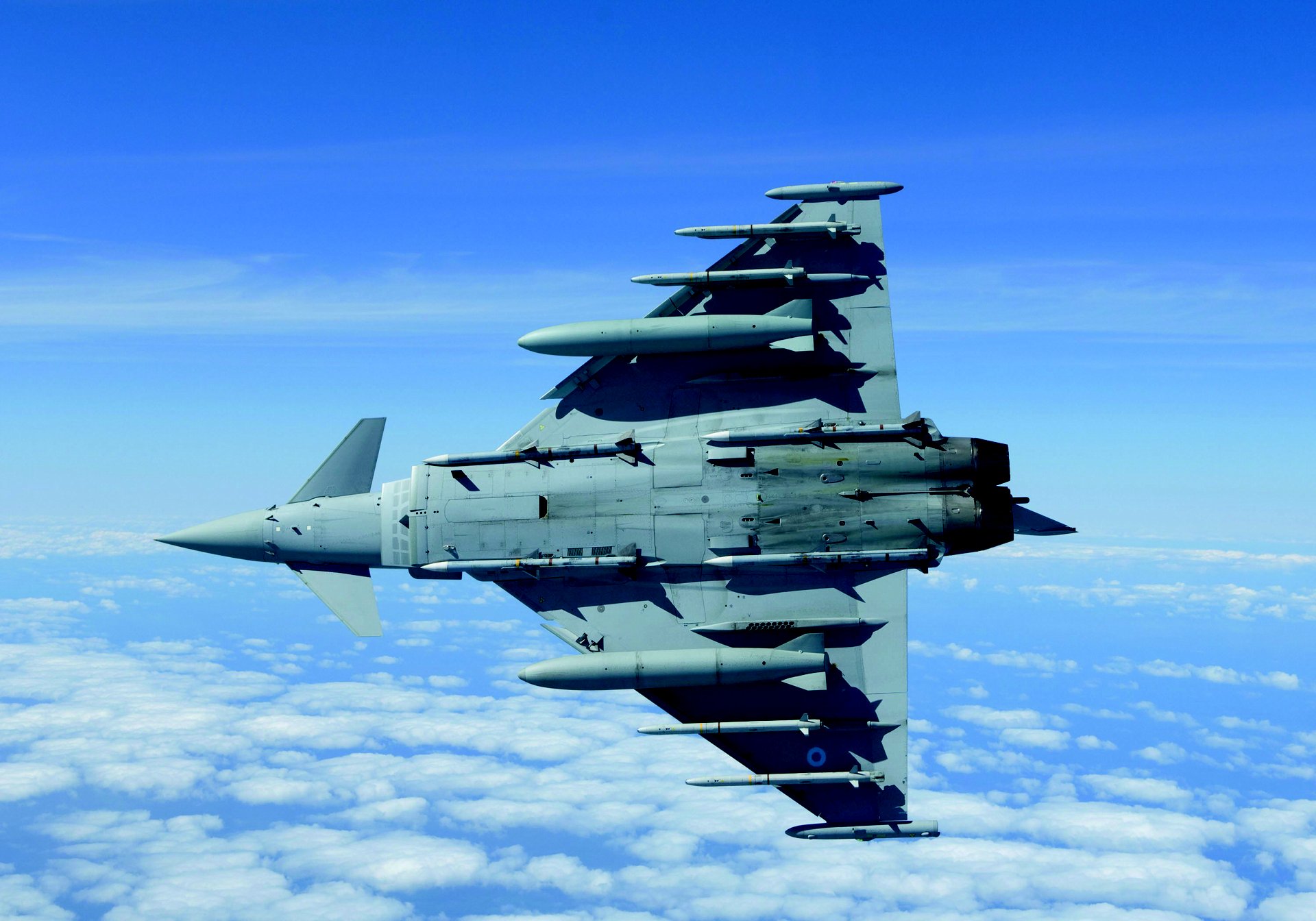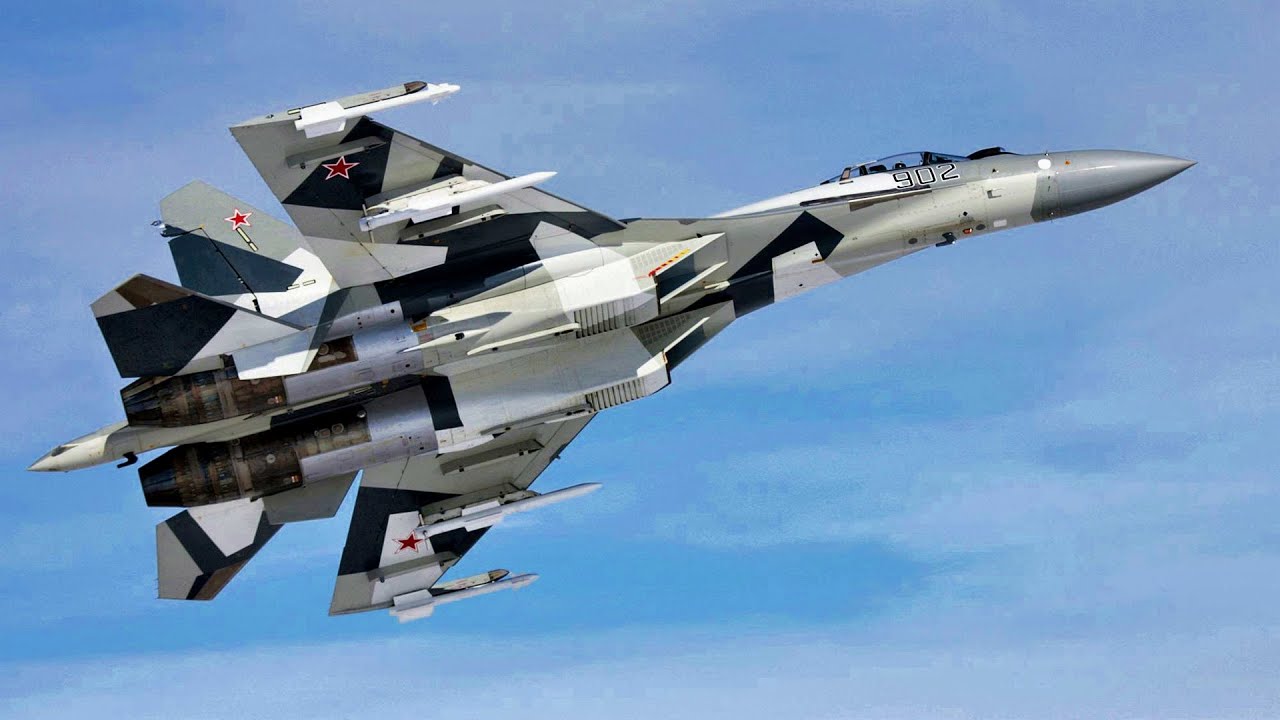The head of the Royal Air Force revealed that the UK’s warplanes and pilots are collaborating with allies to gain an advantage in dogfighting, implying that the country is preparing its F-35s and Eurofighter Typhoons to combat advanced Russian fighter jets like the Su-35.
Air Chief Marshal Sir Mike Wigston stated in a recent interview with Sky News on July 15 that they are collaborating with partners to provide British pilots with the “dogfighting combat edge.”
Sky News reported that the conflict in Ukraine had shown the importance of air forces still being able to engage in dogfights, something that British pilots had not done aggressively in this century.
With the war in Ukraine pitting Russian and Ukrainian pilots against one another, it is thought that London is also preparing its F35s or Typhoons to engage in close-quarters aerial combat against fast enemy jets.
The Chief of the Air Staff contended that Moscow has grown “increasingly more aggressive.” He said they “have to be ready for that, and that – to my mind – is the most significant lesson for European security that comes out of the invasion.”
Wigston did not doubt that the Russian threat is the clear and present danger the country’s Air Force is preparing for. He hopes that “it won’t come to that and deterrence will work but come the day Russia takes an aggressive act against a NATO state, we would be ready.”

According to Wigston, the RAF trains for this particular requirement. He contends that it really comes down to having trained, skilled, and experienced pilots to handle any situation, whether it involves firing a missile or engaging in a close-in dogfight.
He was speaking at the Royal International Air Tattoo (RIAT), the largest military air show in the world, which was taking place in Fairford, Gloucestershire.
“Here at RIAT this week, we have gathered 67 air force and space force chiefs. These are our allies and partners. We train and work with these people day in and day out, and that is what gives us that combat edge, this dogfighting combat edge,” he added.
‘Underpowered’ China’s Z-10 Attack Helicopters Undertake High-Altitude Patrols In Karakorams In A Show Of Strength To India?
Meanwhile, the Ministry of Defense announced that a new radar would be installed on its Typhoon fighter jets as part of a $2.8 billion (£2.35) investment.
The Royal Air Force (RAF) revealed on July 13 that its British Typhoon fighter jets participated in “rare and extremely valuable” one-on-one Dissimilar Air Combat Training, also known as dogfighting, with French Rafale jets.
Typhoons have been training in combat air maneuvers with French Air and Space Force Rafale fighter jets while operating out of bases in the Eastern Mediterranean.
“In addition to some very valuable flying, the operation sends a strong strategic message that we remain in the Eastern Mediterranean as a valuable member of both the counter-Daesh mission and other NATO operations, ready and able to work seamlessly with our many partners in the region,” said the RAF in a statement.
Typhoon Vs. Flankers
The Eurofighter Typhoon is the preferred aircraft for many European countries, including Spain, Germany, Italy, and the United Kingdom. Initially designed as a fighter with purebred air superiority, the Typhoon excels in air-to-air combat.
The Eurofighter Typhoon is expected to take on late-generation Flanker variants like the Sukhoi Su-35 in case of a conflict. Both aircraft are comparable in terms of overall performance and outfitted with some of the most cutting-edge features.
Aerospace and Defense Analyst Girish Linganna told EurAsian Times: “The Su-35 has a length of 21.9 meters, a height of 5.9 meters, and a wingspan of 15.3 meters. The Eurofighter measures 5.29 meters in height and 15.9 meters in length. It has a 10.9 meters wingspan. A smaller size typically corresponds to the aircraft’s smaller radar-cross section (RCS). A smaller RCS, in turn, makes the object more difficult to spot on enemy radars.”
Turkey’s ‘National Combat Aircraft’ Debuts At UK Airshow Along With Attack Chopper, Combat UAVs
The Typhoon and the Su-35 Flanker can operate beyond visual range, but neither aircraft currently has an active electronically scanned array radar. Linganna pointed out that the Su-35’s Irbis-E Passive Electronically Scanned Array (PESA) radar has exceptionally high power levels.
“It permits target detection at distances of up to 300 kilometers and has made strides in detecting low-observable threats like stealth fighters. The paradoxical disadvantage in this situation is that Irbis-E becomes supremely trackable and detectable because it needs to use high power levels to achieve this performance,” he said.

On the other hand, when it comes to long-range tracking and detection in active scanning mode, Eurofighter’s CAPTOR-M radar goes head-to-head with the Su-35’s Irbis-E radar. It might, however, be less effective at identifying low-observable threats.
However, the Praetorian Defensive Aids Sub-System of Leonardo gives the Typhoon a definite advantage in passive tracking, Linganna added. Also, the typhoon radar is improving because of the installation of an E-Scan AESA radar as part of Tranche 4 upgrades.
Moreover, the Meteor missile, often called a “game changer,” can be installed on typhoons. The MBDA Meteor, a long-range ramjet-powered weapon, is said to be the most effective beyond visual air-to-air missile. It has excellent end-game performance and might be the Typhoon pilots’ best asset.
Christian D Orr, a former USAF officer and defense editor at 19FortyFive, told the EurAsian Times that “the Su-35 has already been shot down in aerial combat, by older MiG-29s and Ukrainian SAMs alike. While the Eurofighter has not yet engaged in combat against crewed enemy aircraft, it has not yet been shot down in combat by aerial defense systems either.”
The Su-35 has a higher maximum airspeed of Mach 2.25 than the Typhoon’s Mach 2.0. The former USAF officer said that the Sukhoi has an excellent combat range of 1,600 km (990 mi) versus the Eurofighter’s 1,389 kilometers (863 miles) and greater maneuverability.
“It’s a tough call, but based upon actual combat performance, plus Western fighter pilot tactics & training versus those of the Russkies, I’d give a ‘very’ slight edge to the Typhoon,” Orr concluded.
In a similar line, Linganna said that if Su-35 and Typhoon engage in a dogfight, the technical and non-technical elements, such as pilot expertise, teamwork, etc., will play a significant role in the outcome.
- Contact the author at ashishmichel@gmail.com
- Follow EurAsian Times on Google News




